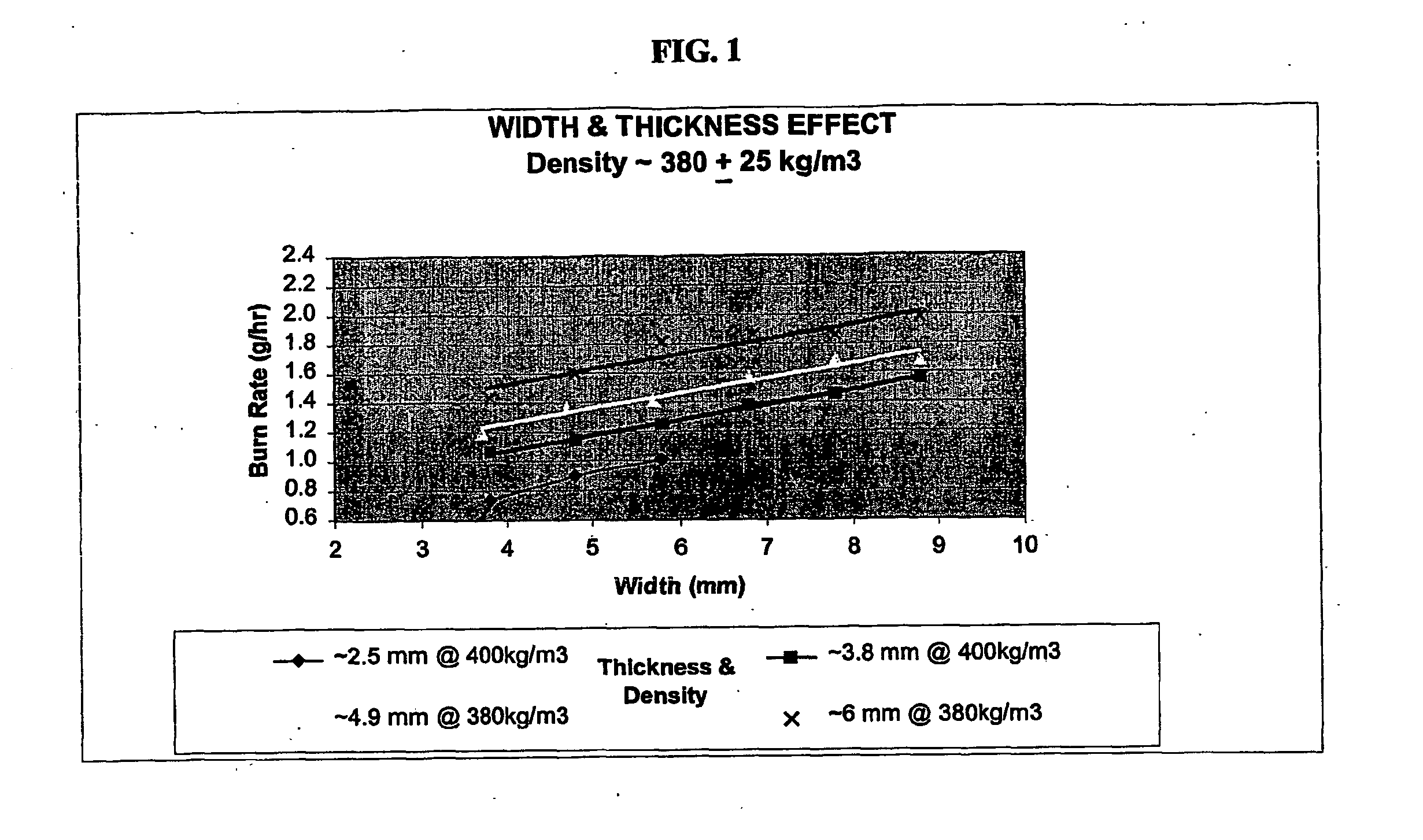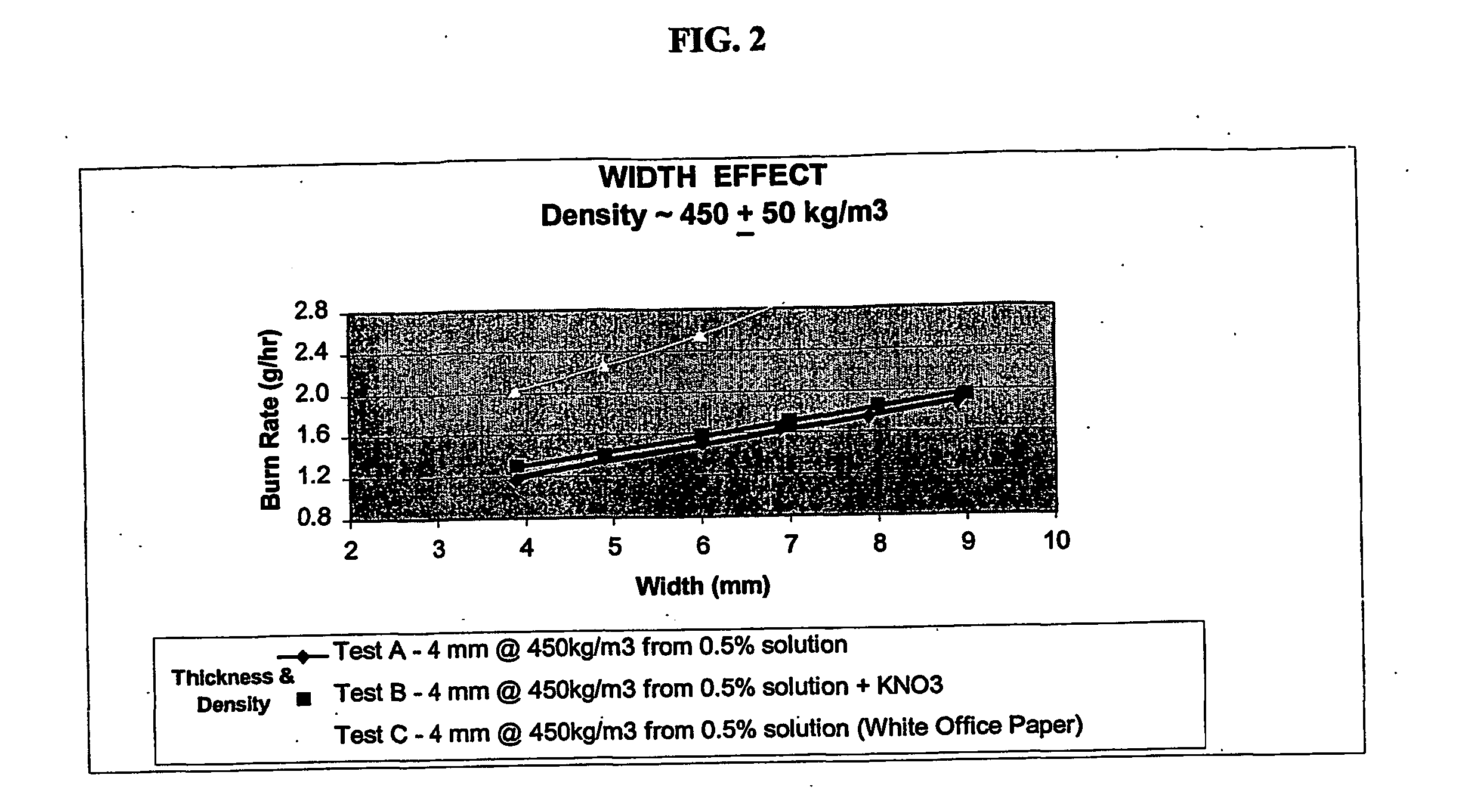Insecticidal coils
- Summary
- Abstract
- Description
- Claims
- Application Information
AI Technical Summary
Benefits of technology
Problems solved by technology
Method used
Image
Examples
example 2
[0065] Trials were conducted to compare the effect on burn rate when the thickness, width and density of the strips were altered. Strips were produced of lengths between 4-9 mm, with a thickness of 2, 3, 4 and 5 mm at densities of 300, 450 and 600 kg / m3. These strips were then burnt to determine their mass burn rate in g / h.
[0066]FIG. 1 shows the effect of varying thickness and widths on burn rate.
[0067] The observed trends were that increasing width increases burn rate, and increasing thickness increases burn rate.
[0068]FIG. 2 shows the effect on the burn rate of the product with a density of 450±50 kg / m3 when an accelerant (KNO3) is added to newspaper pulp and also when using white office paper instead of old newspaper as the main ingredient.
example 3
[0069] Trials were conducted to compare the effect on burn rate when white office paper was used as the main ingredient and also when the accelerant potassium nitrate (KNO3) was used with old newspaper. KNO3 was added at a concentration of 0.125% in the pulp solution. FIG. 2 shows that using white office paper as a raw material increases the burn rate dramatically. Likewise the addition of KNO3 to old newspaper slightly increases the burn rate compared to old newspaper with no additives.
PUM
 Login to View More
Login to View More Abstract
Description
Claims
Application Information
 Login to View More
Login to View More - R&D
- Intellectual Property
- Life Sciences
- Materials
- Tech Scout
- Unparalleled Data Quality
- Higher Quality Content
- 60% Fewer Hallucinations
Browse by: Latest US Patents, China's latest patents, Technical Efficacy Thesaurus, Application Domain, Technology Topic, Popular Technical Reports.
© 2025 PatSnap. All rights reserved.Legal|Privacy policy|Modern Slavery Act Transparency Statement|Sitemap|About US| Contact US: help@patsnap.com


